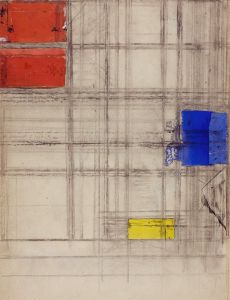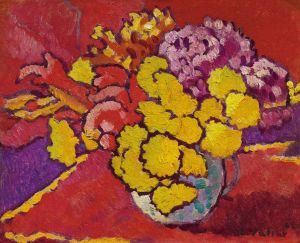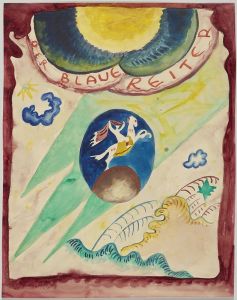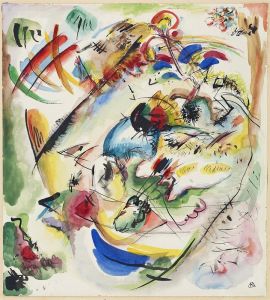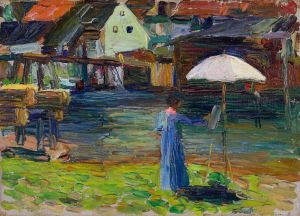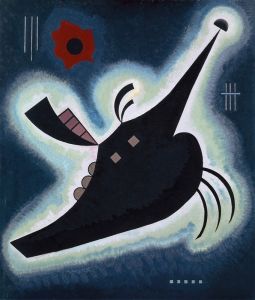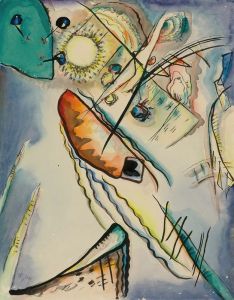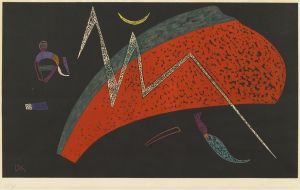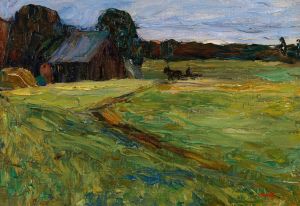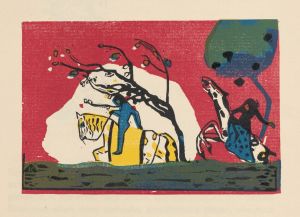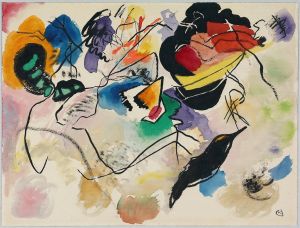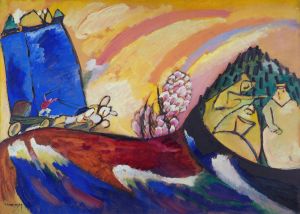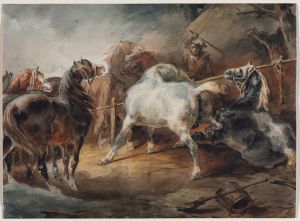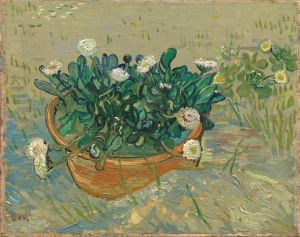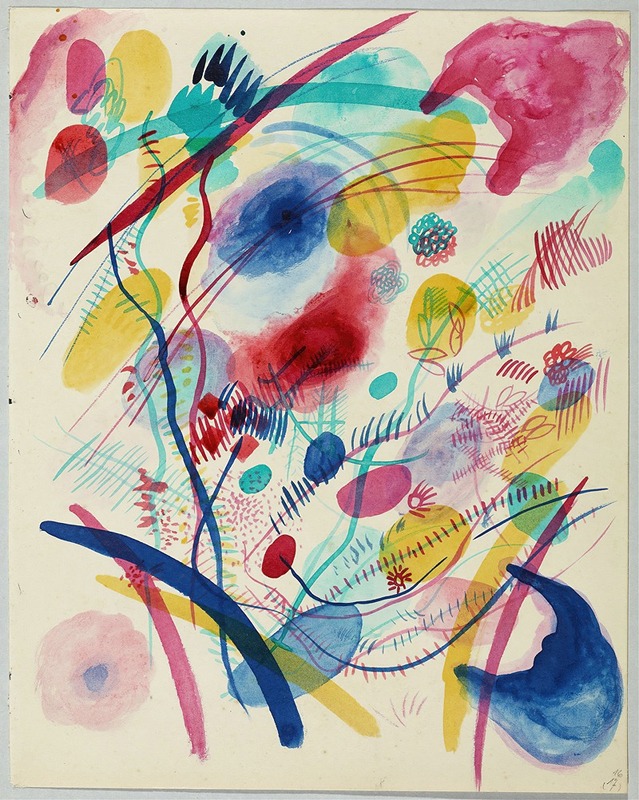
Composition in red, blue, green and yellow
A hand-painted replica of Wassily Kandinsky’s masterpiece Composition in red, blue, green and yellow, meticulously crafted by professional artists to capture the true essence of the original. Each piece is created with museum-quality canvas and rare mineral pigments, carefully painted by experienced artists with delicate brushstrokes and rich, layered colors to perfectly recreate the texture of the original artwork. Unlike machine-printed reproductions, this hand-painted version brings the painting to life, infused with the artist’s emotions and skill in every stroke. Whether for personal collection or home decoration, it instantly elevates the artistic atmosphere of any space.
Wassily Kandinsky, a pioneering figure in abstract art, created "Composition in Red, Blue, Green, and Yellow" during a period when he was deeply exploring the relationships between color, form, and emotion. Kandinsky, born in Moscow in 1866, was a key figure in the development of modern art, particularly known for his role in the transition from representational art to abstract art. His work is characterized by a profound interest in the spiritual and emotional effects of color and form, influenced by his synesthetic experiences where he could "hear" colors and "see" sounds.
"Composition in Red, Blue, Green, and Yellow" is one of Kandinsky's many compositions, a term he used to describe his major works that were akin to musical compositions. These works were not mere representations of the physical world but rather expressions of inner emotional and spiritual experiences. Kandinsky believed that colors and shapes could evoke specific emotions and that art should be a spiritual experience for both the artist and the viewer.
In this particular composition, Kandinsky employs a vibrant palette of red, blue, green, and yellow, each color chosen for its emotional resonance and ability to convey a particular mood or feeling. Red, often associated with energy and passion, contrasts with the calming and serene qualities of blue. Green, a color of balance and harmony, interacts with the warmth and optimism of yellow. The interplay of these colors is not random; Kandinsky meticulously arranged them to create a dynamic and harmonious composition that invites viewers to engage with the painting on an emotional level.
Kandinsky's use of geometric shapes and lines in this composition further enhances the sense of movement and rhythm. Circles, triangles, and lines intersect and overlap, creating a sense of depth and complexity. These elements are not meant to represent any specific objects or scenes but rather to evoke a sense of musicality and rhythm, akin to a symphony of colors and forms. Kandinsky often drew parallels between painting and music, believing that both could transcend the material world and touch the soul.
The painting reflects Kandinsky's theoretical ideas about art, which he articulated in his influential book "Concerning the Spiritual in Art," published in 1911. In this work, Kandinsky argued that art should be a spiritual endeavor, capable of expressing the artist's innermost feelings and connecting with the viewer on a profound level. He saw the artist as a prophet or visionary, capable of revealing unseen truths through the language of color and form.
"Composition in Red, Blue, Green, and Yellow" exemplifies Kandinsky's commitment to abstraction and his belief in the transformative power of art. It invites viewers to look beyond the surface and engage with the painting on a deeper, more intuitive level. Through his innovative use of color and form, Kandinsky sought to create a universal language of art that could transcend cultural and linguistic barriers, speaking directly to the human spirit.
This painting is a testament to Kandinsky's enduring influence on the world of art, inspiring generations of artists to explore the possibilities of abstraction and the emotional potential of color and form. His work continues to be celebrated for its visionary approach and its ability to evoke a sense of wonder and introspection.





